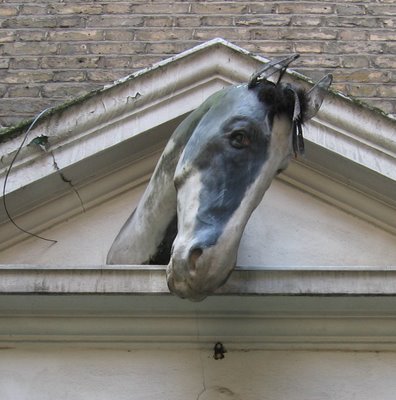Passover at the Old City
The old city of Jerusalem was packed with visitors; the Passover week is a national holiday. At the old city castle, I found my way to one of the cellars, where a model of the city is displayed.It's a story for W.G.Sebald. A Hungarian from Bratislava named Stephan Illish, with majestic red beard and magician's look in his eyes, settled in Jerusalem in the 1860s. He started working at the Fransiscan Print shop, but then became obessesed with a project of building a model of Jerusalem. He consulted architects and geographers, and worked carefully, for years. The model was huge; it fills a whole room. It was first shown to the public in Europe at the Ottoman pavillion of the Vienna world exhibition, 1873. From there it went round Europe, until in 1880 the city of Geneve acquired it from donations, and put it on permanent display at the Salle de la Reformation; there it was admired by the public until the 1920s, at which point it was moved to a cellar and forgotten. In 1984 it was rediscovered by accident and sent back to Jerusalem, on loan.
Looking at the model, I realized again how many of the buildings that we usually think of as 'old Jerusalem' are actually from late 19th century.The Mt. Zion church, the Russian church of Gathsheman... and other buildings, many of them are located within the city walls. The real 'old jerusalem' is tiny in size; Jerusalm, or about 98 percent of it, is a city no older than Melbourne or New York. So many people write about the city's historic character, but most of this is just fake, the creation of modern fantasies: the British, the Jews and the Arabs all had their ideas about how this 'ancient and sacred' city should look, and they made it so. Crucial in this sense was the British Governor Storrs decree (1919) allowing only building in stone. No doubt there is beauty in stone houses but when a whole city is built of stone... I've started to think it's awful. It's not human, it's monumential; stone is hard, depressing and eye-straining. What is worse, it serves this discourse about the 'spirituality' of this city.
I was contemplating all this when an ultra ortodox man and his 5 year old daughter walked in.
Father: 'You see there, sweetie, that's where the temple used to be. And today there's a mosque there.
Girl: 'What is it?'
Father: 'A mosque, where the muslims pray.'
Girl: 'Poo'.
Father: 'Exactly. Now let's see the train model'.
The toy train model was in the next room. It was even bigger than the Jerusalem model. It consisted of a European toy city with its train station and middle class houses, train depots, a river. About 7 trains where constantly in motion; one of them I recognized as the ICE (Inter City Express, the german train). The kids went crazy. In the centre of the room was a huge mountain, with grass meadows and little cows were roaming its slopes. Of course, the mountain was needed for the tunnels (a toy train with no tunnels is no fun at all). This strange Bavarian fantasy was built by Josef Ferbourg, 'a train lover', especially for display in the cellars of a Jerusalem citadel.
* * *
Outside the citadel, I bought a bagel from one of the stalls, only to be told off by two little religious (Jewish) girls. "He's eating bread!!!!"
most characteristic of the Passover holiday: the smell of burning, roasting meat from barbecues (manqals) in the public parks and gardens. In some parks, it's bbq per square meter. This time of year is not a good time for vegeterians to visit; in two weeks it will be Independence Day, which is the national festival of kebab.


1 Comments:
In 'Rings of Saturn' it's a model of the Hebrew Temple, and it's made of matchsticks, I think. But this model was made from - i'm not sure actually. It looked like bits of wood.
Post a Comment
<< Home